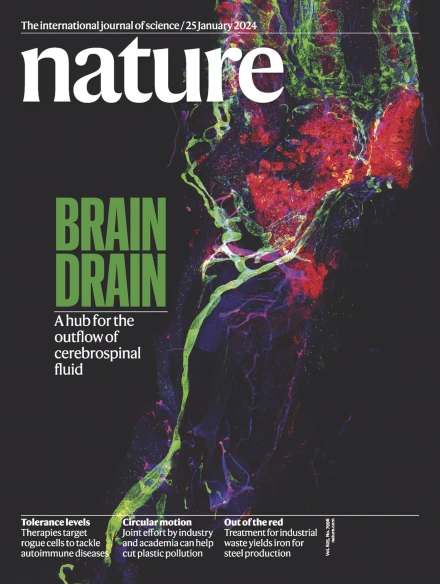具有代谢功能的人成人肝细胞类器官的产生
IF 48.5
1区 综合性期刊
Q1 MULTIDISCIPLINARY SCIENCES
引用次数: 0
摘要
增殖的肝细胞经常发生导管化生,以平衡细胞功能和复制之间的能量平衡,从而阻碍了具有功能能力的成人肝细胞的扩增1。在这里,我们证明了Wnt和STAT3信号的联合激活能够使人类成人肝细胞类器官的长期自我更新。YAP激活促进肝细胞增殖,但使其向胆管谱系转移。相反,抑癌素M激活STAT3可诱导肝细胞增殖,同时抑制导管化生,维持肝脏的同一性。异种移植的肝细胞类器官重新填充受体小鼠肝脏并重建代谢带结构。去除生态位因子和补充激素后,肝细胞类器官形成带胆管网络的索状结构,并表现出与体内肝细胞相当的主要肝脏代谢功能。肝细胞类器官可接受基因编辑,促进固有代谢性肝脏疾病的功能建模。新的培养系统为开发针对人类肝脏疾病的治疗策略提供了一条有希望的途径。本文章由计算机程序翻译,如有差异,请以英文原文为准。


Generation of human adult hepatocyte organoids with metabolic functions
Proliferating hepatocytes often undergo ductal metaplasia to balance the energy trade-off between cellular functions and replication, hindering the expansion of human adult hepatocytes with functional competency1. Here we demonstrate that the combined activation of Wnt and STAT3 signalling enables long-term self-renewal of human adult hepatocyte organoids. YAP activation facilitates hepatocyte proliferation but commits it towards the biliary duct lineage. By contrast, STAT3 activation by oncostatin M induces hepatocyte proliferation while counteracting ductal metaplasia and maintaining the hepatic identity. Xenotransplanted hepatocyte organoids repopulate the recipient mouse liver and reconstitute the metabolic zonation structure. Upon niche factor removal and hormone supplementation, hepatocyte organoids form cord-like structures with bile canalicular networks and exhibit major liver metabolic functions comparable to those of in vivo hepatocytes. Hepatocyte organoids are amenable to gene editing, prompting functional modelling of inherent metabolic liver diseases. The new culture system offers a promising avenue for developing therapeutic strategies against human liver diseases. The combined activation of Wnt and STAT3 signalling enables long-term self-renewal of human hepatocyte organoids, maintaining hepatic identity, supporting gene editing and offering therapeutic potential for liver disease through enhanced functionality, structure and metabolic competency.
求助全文
通过发布文献求助,成功后即可免费获取论文全文。
去求助
来源期刊

Nature
综合性期刊-综合性期刊
CiteScore
90.00
自引率
1.20%
发文量
3652
审稿时长
3 months
期刊介绍:
Nature is a prestigious international journal that publishes peer-reviewed research in various scientific and technological fields. The selection of articles is based on criteria such as originality, importance, interdisciplinary relevance, timeliness, accessibility, elegance, and surprising conclusions. In addition to showcasing significant scientific advances, Nature delivers rapid, authoritative, insightful news, and interpretation of current and upcoming trends impacting science, scientists, and the broader public. The journal serves a dual purpose: firstly, to promptly share noteworthy scientific advances and foster discussions among scientists, and secondly, to ensure the swift dissemination of scientific results globally, emphasizing their significance for knowledge, culture, and daily life.
 求助内容:
求助内容: 应助结果提醒方式:
应助结果提醒方式:


